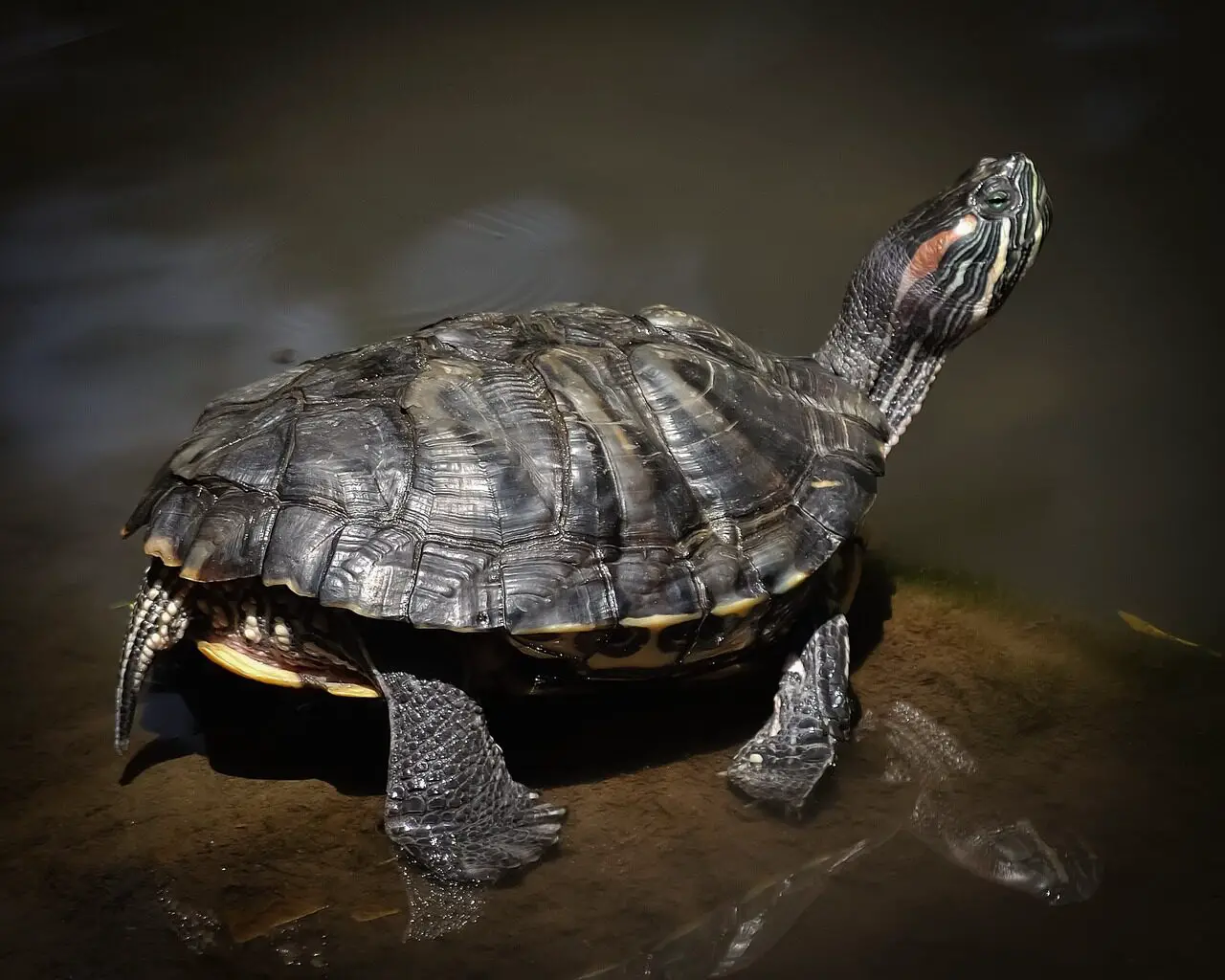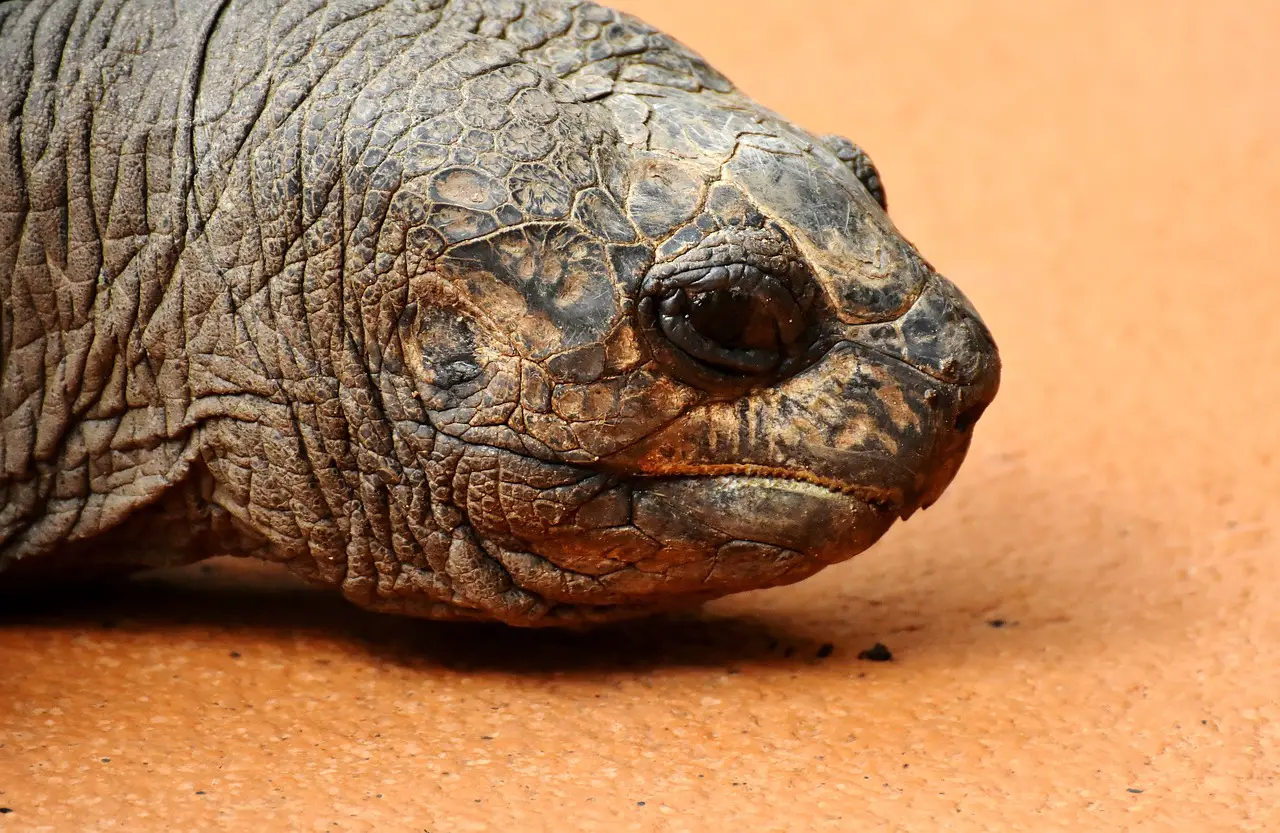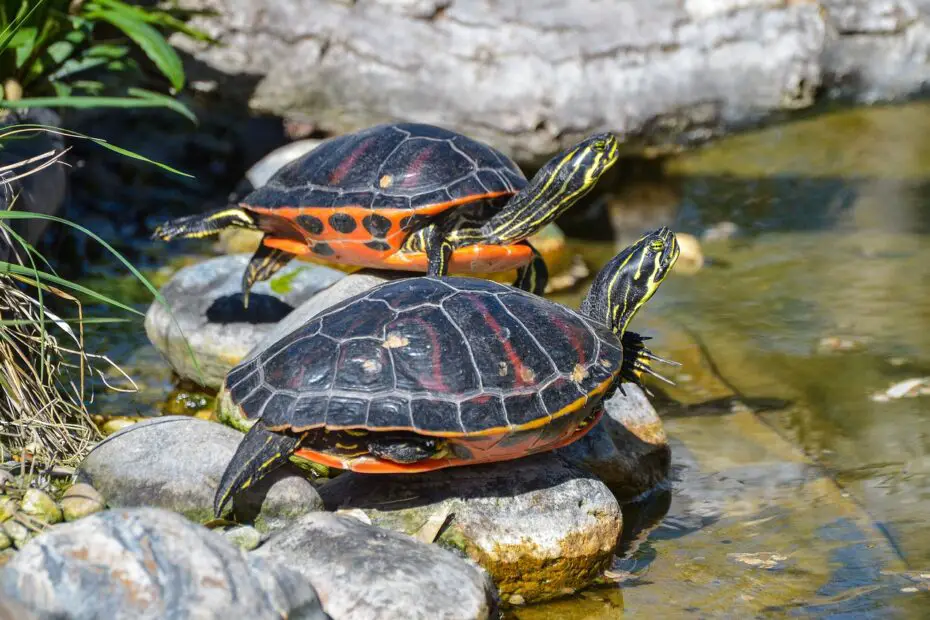Turtles and tortoises, with their distinctive shells and leisurely pace, are among the most captivating creatures on our planet. These ancient reptiles have been around for millions of years, and their remarkable adaptations have allowed them to thrive in a wide range of environments, from the depths of the ocean to arid deserts and lush forests.
In this blog, we will take a deep dive into the fascinating world of turtles and tortoises, exploring their biology, behavior, diversity, and the challenges they face in today’s world.
You may also want to know how fast alligator can run.
The Basics: Turtles vs. Tortoises
Before we delve into the intricacies of these remarkable reptiles, let’s clarify the difference between turtles and tortoises:

Turtles
Turtles are aquatic or semi-aquatic reptiles with webbed feet or flippers. They spend a significant portion of their lives in water and are adapted for swimming. Turtles have streamlined bodies, and their shells are usually lighter and more streamlined to help them move through the water with ease.
Tortoises
Tortoises, on the other hand, are primarily terrestrial reptiles. They have sturdy, dome-shaped shells designed to protect them from predators and environmental hazards. Tortoises are not built for swimming; instead, they are adapted for a life on land and often have column-like legs and clawed feet for digging.
An Ancient Lineage
Turtles and tortoises belong to a group of reptiles known as Testudines, which includes all modern-day turtles, tortoises, and terrapins. This lineage has been evolving for over 200 million years, making them one of the oldest reptile groups on Earth. Fossil records reveal that their ancestors were already present during the time of the dinosaurs.
Shelled Marvels: The Anatomy of Turtles and Tortoises
The defining feature of turtles and tortoises is, of course, their shell. This remarkable structure is an integral part of their anatomy and serves multiple purposes:
Protection
The shell is primarily a defensive adaptation, offering protection against predators. Turtles can retract their limbs and head inside the shell when threatened, creating an impenetrable fortress.
Buoyancy
In aquatic turtles, the shell helps with buoyancy control. They can adjust their position in the water by manipulating the air within their lungs and the spaces between their internal organs and the shell.
Thermoregulation
The shell also plays a role in thermoregulation. Turtles and tortoises are ectothermic, meaning their body temperature depends on their environment. By basking in the sun, they can raise their body temperature and become more active.
Sensory Organs
While the eyesight of turtles and tortoises varies among species, they have excellent senses of smell and hearing. Many species use these senses to locate prey or communicate with each other through vocalizations.
Diversity Across the Globe
Turtles and tortoises are a diverse group of reptiles found on nearly every continent. They have adapted to a wide range of habitats and ecological niches, resulting in remarkable diversity. Here are a few notable examples:
Sea Turtles
Sea turtles are well adapted to an entirely aquatic life. They have flippers instead of legs and spend most of their lives in the ocean, only coming ashore to nest. These ancient mariners have an extraordinary migratory capacity and can traverse entire ocean basins.
Galápagos Tortoises
The Galápagos Islands are famous for their giant tortoises, which can weigh up to 900 pounds and live for over a century. These gentle giants played a crucial role in Charles Darwin’s theory of evolution by natural selection.
Box Turtles
Box turtles are terrestrial turtles found in North America. They get their name from their ability to completely close their hinged shell, protecting themselves from predators. These turtles have beautifully patterned shells and are popular as pets, although they should be kept in their natural habitats whenever possible.

Desert Tortoises
Desert tortoises are adapted to arid regions in North America. They have specialized kidneys that allow them to extract water from their food, and they can burrow underground to escape extreme heat and cold.
Life History and Behavior
Turtles and tortoises exhibit a wide range of behaviors and life history strategies depending on their species and environment. Here are some interesting aspects of their lives:
Reproduction
Turtles and tortoises reproduce in various ways. Most lay eggs, digging nests in sandy or soft soil to bury their eggs. The temperature at which the eggs incubate determines the sex of the hatchlings in some species.
Longevity
Turtles and tortoises are renowned for their longevity. Many species can live for several decades, and some individuals have been recorded living well over a century. Their slow metabolism and well-protected shells contribute to their impressive lifespans.
Communication
While turtles and tortoises are not known for their vocalizations, they communicate through body language and physical interactions. Courtship rituals often involve head bobbing, circling, and nudging between individuals.
Feeding Habits
Their diets vary widely depending on their species and habitat. Some are herbivorous, feeding on plants and fruits, while others are omnivorous, consuming both plant matter and small prey like insects and aquatic invertebrates.
Challenges and Conservation
Despite their resilience and adaptability, turtles and tortoises face numerous challenges in the modern world. Here are some of the main threats they encounter:
Habitat Loss
As human populations expand, turtle and tortoise habitats are increasingly being converted into agriculture, urban areas, and infrastructure. This habitat loss disrupts their natural behaviors and migration patterns.
Illegal Trade
Turtles and tortoises are frequently targeted by the illegal pet trade. Collectors covet exotic species, often leading to overharvesting and the spread of diseases among captive populations.
Climate Change
Climate change poses a significant threat to turtles and tortoises. Rising temperatures can skew sex ratios in some species, leading to imbalanced populations, and sea-level rise threatens nesting beaches for sea turtles.
Pollution
Pollution, particularly plastic pollution in the oceans, affects turtles. Ingestion of plastic debris can be fatal, and oil spills can harm their habitats and food sources.
Conservation Efforts
Conservation organizations, scientists, and governments are working tirelessly to protect turtles and tortoises. Efforts include:
Habitat Protection
Creating and expanding protected areas and wildlife corridors to ensure suitable habitats for these reptiles.
Research
Conducting research on turtle and tortoise biology, behavior, and conservation needs to inform effective protection strategies.
Education
Raising public awareness about the importance of turtles and tortoises and the threats they face, as well as promoting responsible pet ownership.
Legal Protections
Enforcing laws and regulations that protect these species from poaching, habitat destruction, and the illegal pet trade.
Conclusion
Turtles and tortoises, with their ancient lineage and unique adaptations, are captivating creatures that enrich our world’s biodiversity. Their resilience in the face of changing environments and their important roles in ecosystems make them essential to our planet’s health and balance. However, these remarkable reptiles are not immune to the challenges of the modern world, from habitat loss to pollution.
As stewards of our planet, it is our responsibility to protect and conserve these slow-moving marvels. Through education, conservation efforts, and responsible actions, we can ensure that future generations continue to marvel at the enduring beauty and importance of turtles and tortoises in our world.
